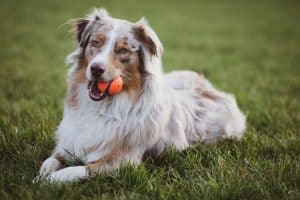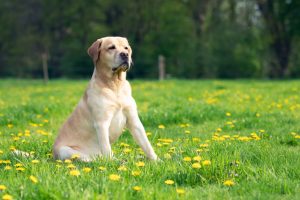Imagine a world where your dog is the epitome of confidence, bravely navigating new situations and making friends with both humans and other dogs.
The secret to achieving this canine utopia? Socialization! Ensuring your dog is well-socialized can save you from headaches down the road and lead to a happier, more fulfilled pet.
Dive into this guide to unlock the secrets of effective socialization and transform your dog into a confident, well-adjusted companion. Prepare yourself to uncover the secrets that will revolutionize your dog’s world.

Why Does Your Dog Need Socialization?
Socialization is the process of exposing your dog to a variety of experiences, people, animals, and environments.
It’s crucial because it helps your dog develop the necessary skills to cope with new situations and stimuli.
A well-socialized dog is less likely to develop fear, anxiety, or aggression, making them a more enjoyable and reliable companion.
What Are the Benefits of a Well-Socialized Dog?
A well-socialized dog enjoys several advantages.
They are generally more relaxed and confident, adapting to new situations with ease. This confidence leads to fewer behavioral problems, such as excessive barking, destructive chewing, or separation anxiety.
Additionally, a socialized dog is more likely to have positive interactions with other dogs and humans, making outings and gatherings much more enjoyable for both you and your furry friend.
How to Expose Your Dog to New Experiences?
Exposing your dog to new experiences is a vital part of the socialization process. It helps your dog build confidence, adapt to various situations, and learn how to interact positively with the world around them.
Here are some steps to guide you in exposing your dog to new experiences:
- Start early. Begin exposing your dog to new experiences as early as possible, ideally during the critical socialization period (3-14 weeks of age for puppies). In addition, it’s never too late to start socializing an adult dog.
- Gradual exposure. Introduce your dog to new experiences gradually, avoiding overwhelming situations. Start with less intimidating stimuli, such as quieter environments and familiar people, and build up to more challenging ones, like busy streets or crowded parks, as your dog becomes comfortable.
- Use positive reinforcement. Encourage and reward your dog for exploring new experiences. Use treats, praise, and affection to reinforce positive behavior during exposure to new situations.
- Diversify experiences. Expose your dog to a wide range of environments, objects, people, and animals. This includes different surfaces, sounds, smells, and situations such as car rides, elevators, and veterinary visits.
- Attend training classes. Enroll in a well-structured, positive reinforcement-based puppy or dog training class. This provides a controlled environment for your dog to learn and socialize with other dogs and people under professional guidance.
- Set realistic expectations. Understand that your dog may have individual preferences and limitations. Be patient, and recognize that some dogs may take longer to adjust to new experiences.
- Monitor body language. Pay close attention to your dog’s body language during exposure to new experiences. If they show signs of stress or fear, slow down the process and give them time to adjust before moving forward.
- Maintain consistency. Socialization is an ongoing process. Continue to expose your dog to new experiences throughout their life to maintain and strengthen their socialization skills.
By following these steps, you’ll help your dog develop a strong foundation for socialization, making it easier for them to handle new experiences and interact positively with their environment.
How To Introduce Your Dog to Other Dogs and Humans?
Introducing your dog to other dogs and humans is a crucial part of socialization.
Begin by choosing the right environment, such as a controlled setting like a puppy playgroup or a dog training class. These settings offer a safe space for your dog to interact with others under professional guidance.
When introducing your dog to new people, ask the person to approach calmly and allow your dog to initiate contact. Encourage the person to speak softly, avoid direct eye contact, and offer a treat to create a positive association.
When introducing your dog to other dogs, it’s essential to start with a controlled and neutral environment, like a quiet park or a friend’s backyard.
Keep both dogs on a loose leash and allow them to approach each other at their own pace. Pay close attention to their body language and be prepared to intervene if any signs of aggression or fear emerge.
Positive reinforcement, like treats and praise, should be used during these introductions to create a pleasant experience for both dogs. Over time, as your dog becomes more comfortable, you can gradually expose them to a wider variety of dogs and humans in different settings.

How to Monitor and Manage Reactions?
Being attentive to your dog’s body language will help you identify their emotions and respond accordingly. First, familiarize yourself with common canine body language cues.
A relaxed, happy dog may have a wagging tail, a loose body, and an open mouth with tongue visible. On the other hand, a dog displaying fear or anxiety may tuck its tail, cower, or show the whites of its eyes. Signs of aggression can include raised hackles, bared teeth, and a stiff posture.
While exposing your dog to new experiences, maintain a calm demeanor and remain alert to their reactions.
If your dog shows signs of fear, anxiety, or aggression, it’s crucial to take a step back and evaluate the situation. In some cases, you may need to remove your dog from the environment or create distance between them and the stressor.
To help your dog overcome negative reactions, gradually desensitize them to the triggering stimulus.
Begin with a low-intensity version of the stimulus and reward your dog for remaining calm. Gradually increase the intensity while continuing to reinforce positive behavior. Remember to be patient, as this process may take time.
In some cases, seeking professional help from a certified dog trainer or behaviorist may be necessary. These experts can offer guidance on managing your dog’s reactions and developing a personalized socialization plan that suits your dog’s unique needs.
Building Confidence: Maintaining Socialization Skills
The journey of socialization is an ongoing adventure that extends far beyond your dog’s early years. Keep the momentum going by regularly exposing your dog to new experiences, attending refresher training classes, and engaging in interactive play.
As you celebrate each small victory, remember that consistency, patience, and positivity are your most powerful tools in helping your dog remain a confident, well-adjusted member of your family.
Here’s a great video on puppy socialization:
FAQs
The critical socialization period for puppies is between 3-14 weeks of age, making it the ideal time to begin exposing them to new experiences, people, animals, and environments.
How can I introduce my dog to other dogs safely?
Introduce your dog to other dogs in a controlled and neutral environment, like a quiet park or a friend’s backyard, with both dogs on a loose leash, allowing them to approach each other at their own pace while monitoring their body language.
Yes, adult dogs can still be socialized, although it may require more time and patience. Gradual exposure, positive reinforcement, and consistent practice are essential for successfully socializing adult dogs.
If your dog displays fear or aggression, create distance between them and the stressor, then gradually desensitize them to the triggering stimulus using low-intensity versions, rewarding calm behavior, and increasing intensity over time.
Alex, a passionate animal lover, has experience in training and understanding animal behavior. As a proud pet parent to two dogs and three cats, he founded AnimalReport.net to share insights from animal experts and expand his knowledge of the animal kingdom.




